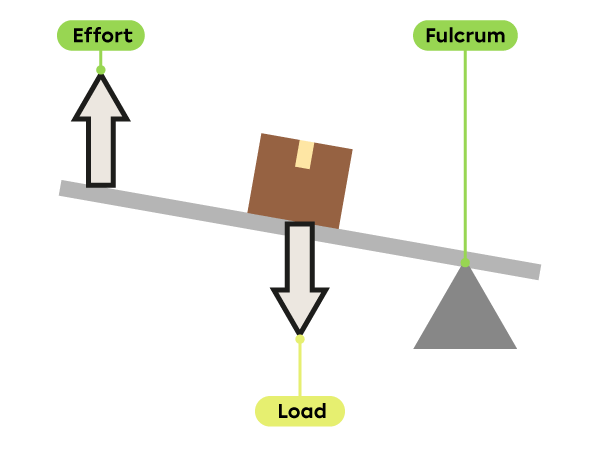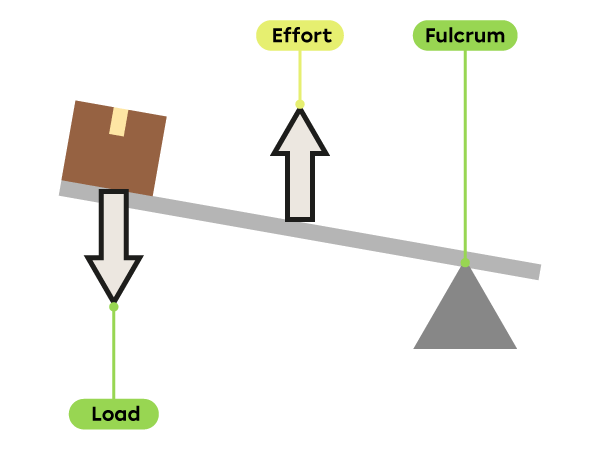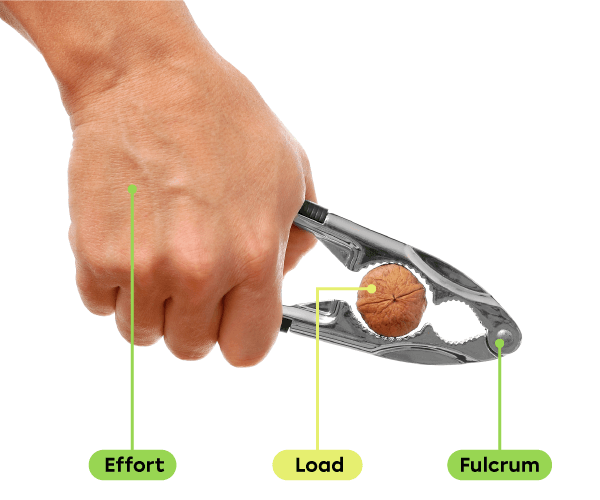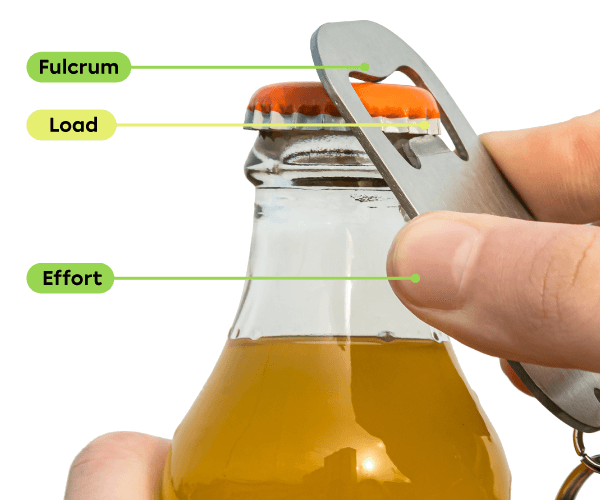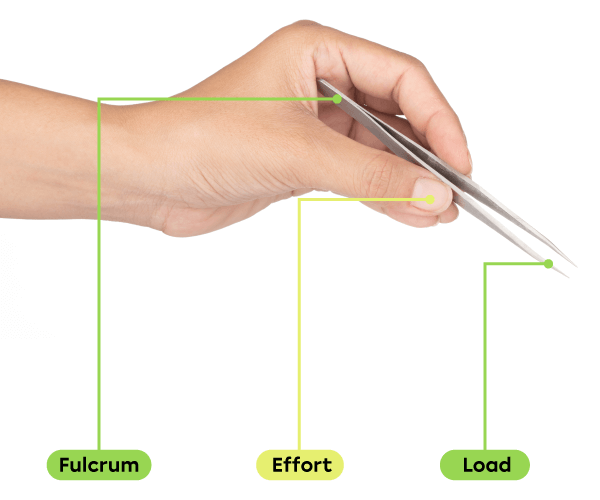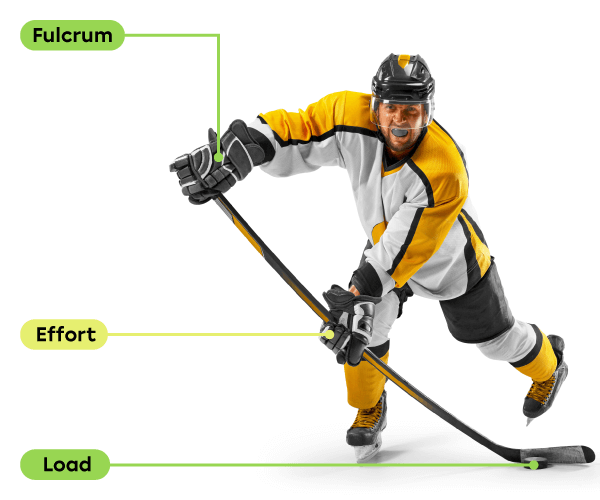The lever is a simple machine that consists of an elongated rigid part that pivots around the fulcrum.
In a lever, there are three elements to consider: the effort, the fulcrum and the load.
-
The effort, also called the driving force, is the effort force applied to the lever.
-
The fulcrum is the fixed point around which the lever pivots.
-
The load, also called the resistance force, is the weight of the object to be lifted.
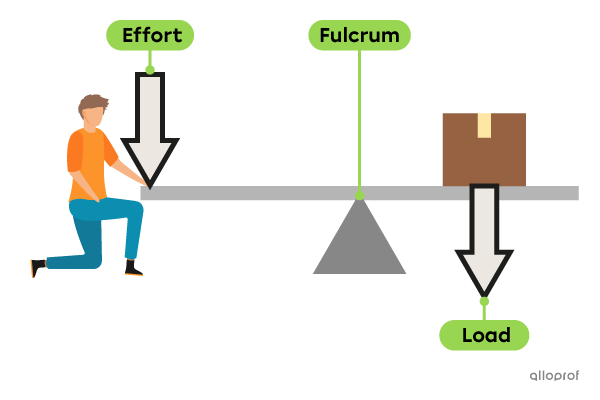
The lever reduces the force required to move or deform an object.
The closer the object is to the fulcrum, the smaller the driving force required to lift or deform it.
The following two cases represent situations where an object that has to to be lifted is closer to or further from the fulcrum.
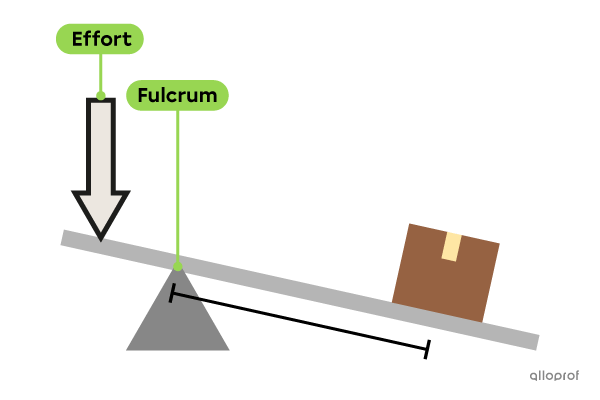
The object that has to be lifted is far from the fulcrum. The effort is high because a large force has to be applied by the person.
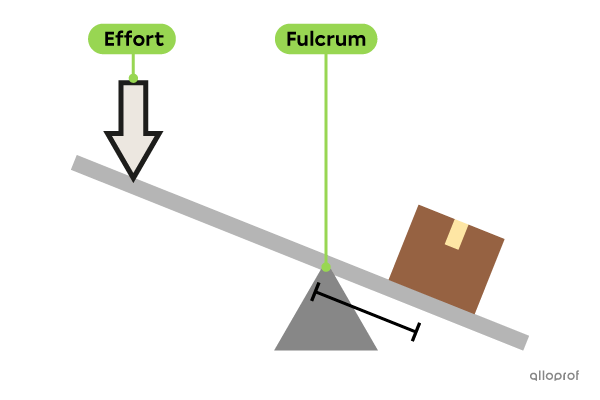
The object that has to be lifted is close to the fulcrum. The effort is low because a small force has to be applied by the person.
There are three types of levers, depending on where the effort, load and fulcrum are placed.
|
Type of lever |
Diagram |
|---|---|
|
|
|
|
|
|
|
|
A mnemonic can be used to memorize the types of levers: FLE - 123.
|
F |
1 |
Fulcrum is in the middle in 1st-class levers. |
|
L |
2 |
Load is in the middle in 2nd-class levers. |
|
E |
3 |
Effort is in the middle in 3rd-class levers. |
In a first-class lever, the fulcrum is in the middle, between the effort and the load.
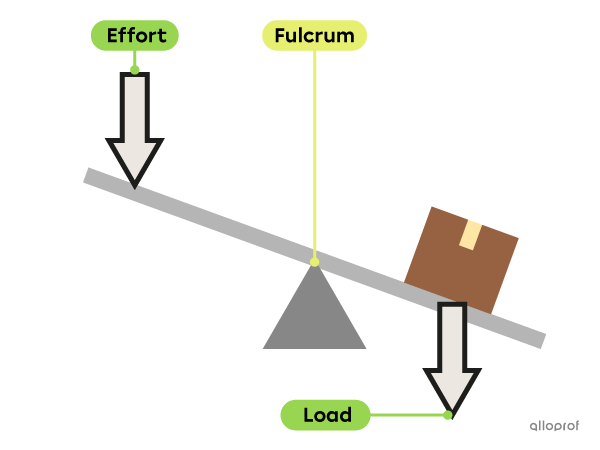
-
When the fulcrum is closer to the load than to the point where the effort force is applied, the effect of the effort is multiplied. The lever can therefore be used to perform tasks that require a significant force.
-
When the fulcrum is closer to the point where the effort force is applied than to the load, the speed and precision of the motion are increased.
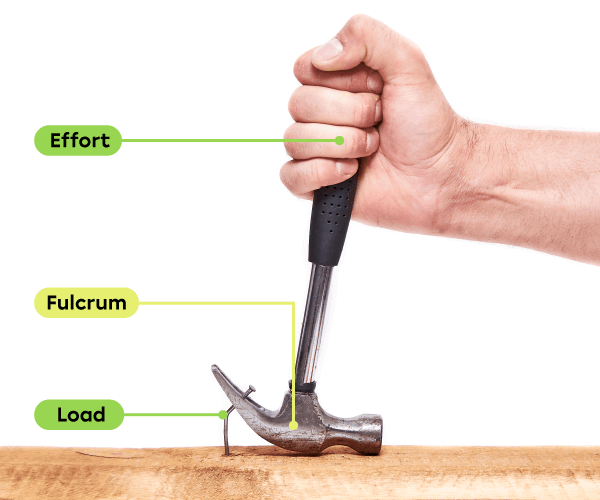
Source: Adapted from Rozhkov Denis, Shutterstock.com
The fulcrum is closer to the point where the resistance force (load) is applied than to the effort force. The effect of the effort force is multiplied.

Source: Adapted from Butterfly Hunter, Shutterstock.com
The fulcrum is closer to the point where the effort force is applied than to the resistance force (load). This increases the speed and precision of the blades.
In a second-class lever, the resistance force (load) is in the middle, between the effort and the fulcrum.
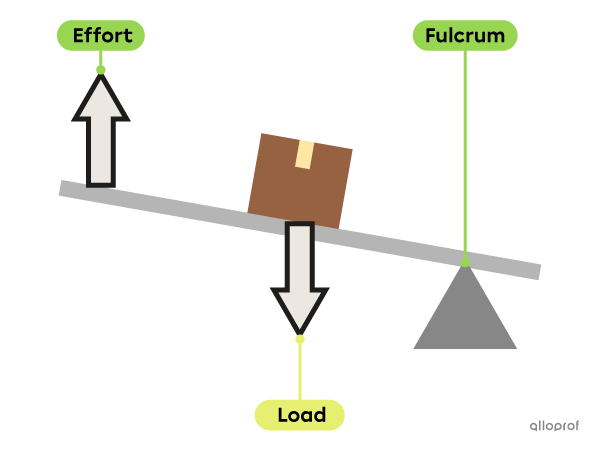
Since the load is always closer to the fulcrum than the point where the effort force is applied, this force is always multiplied. This lever makes it possible to carry out tasks that require a significant force.
In a third-class lever, the effort force is in the middle, between the load and the fulcrum.

Since the load is always further from the fulcrum than the point where the effort force is applied, the speed and precision of the motion are always increased. The lever can therefore be used to carry out tasks that require precision or to move an object at high speed.

